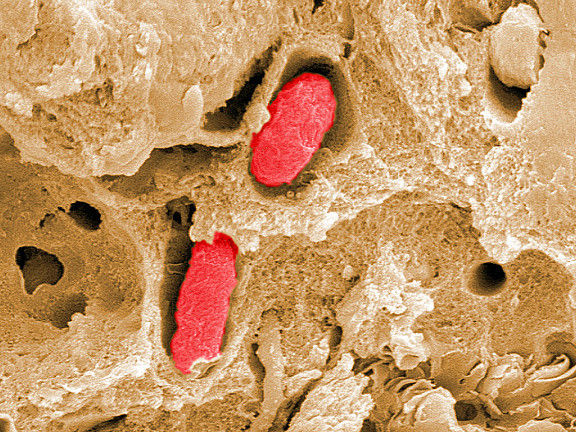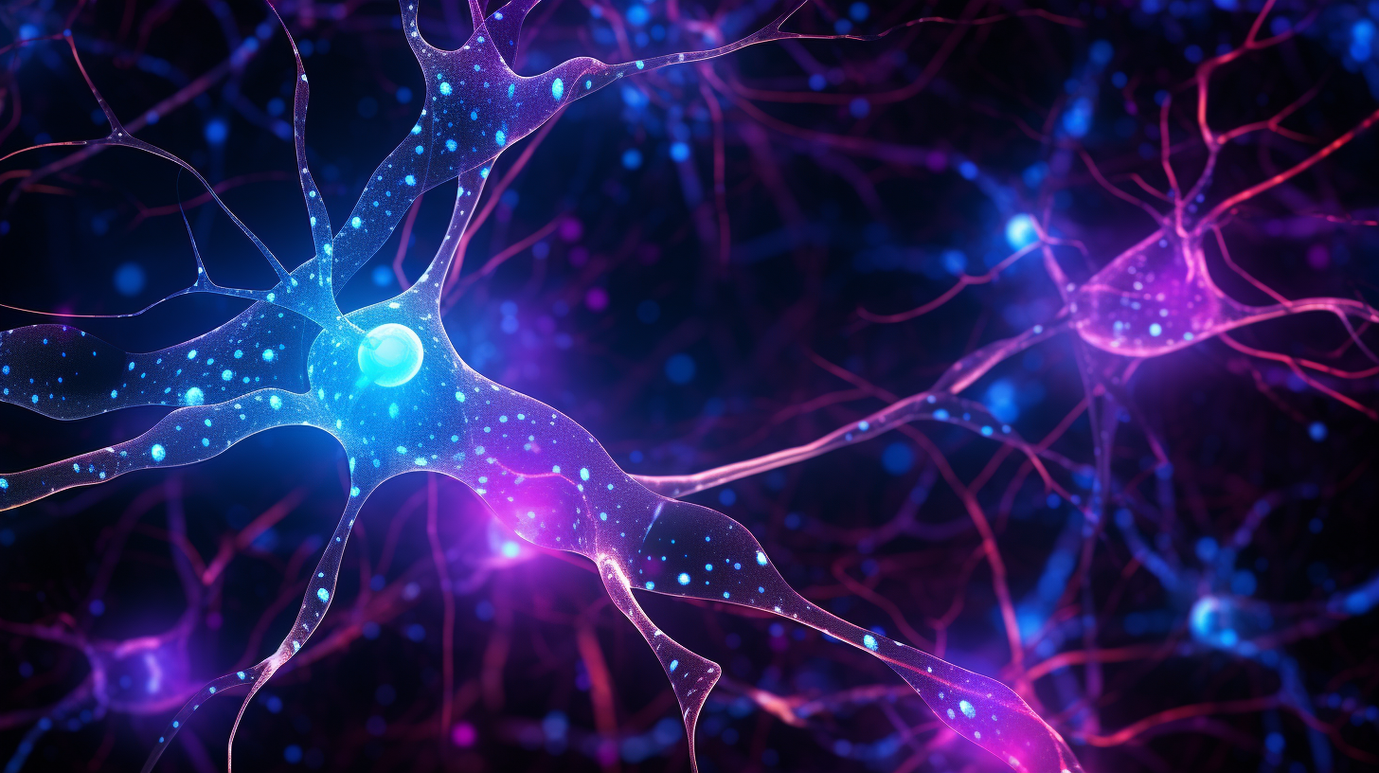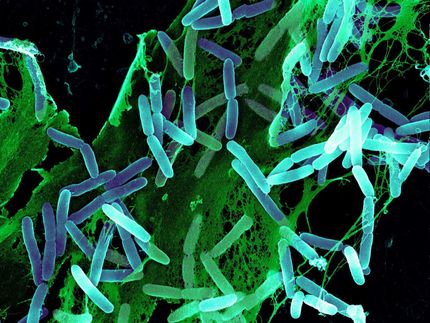Salmonellae under the magnifying glass
Basic research elucidates various aspects of salmonellae for possible clinical application
Advertisement
bacteria of the Salmonella genus can gain entry to the human body through spoiled or contaminated foods and then cause severe diarrhoeal diseases. But salmonellae can be useful as well: They can colonise tumours to the effect that these can be detected and tackled by the immune system. A serious issue: The salmonella infection can be fatal for cancer patients. Investigating possible therapeutic uses of these bacteria, scientists of the Helmholtz Centre for Infection Research (HZI) in Braunschweig are looking for ways to render the bacteria harmless and at the same time make them release anti-cancer agents into the tumour tissue. Investigations of various aspects of salmonellae have allowed the scientists to take a step forward.

Salmonella in dead tumor tissue
HZI/Manfred Rohde
Several million people throughout the world contract an infection by Salmonella bacteria each year and this turns out to be fatal for hundreds of thousands of them. The risk of these infections is particularly high in small children, the elderly or people with a compromised immune system. It has been known since the 19th century, that salmonellae can also specifically colonise tumour tissue. But the therapeutic use of these bacteria against cancer has been hampered by the fact that they can occasionally cause life-threatening infection in the patients. The scientists of the Helmholtz Centre for Infection Research (HZI) therefore aimed to produce Salmonella preparations that are less hazardous for the body and at the same time trigger a strong response of the immune system. Under these conditions, the body's inherent defence could eliminate both the tumour and the salmonellae.
"However, the effect of the bacteria is not strong enough for just any tumour," says Prof Siegfried Weiß, who is the director of the Molecular Immunology department at the HZI. "We therefore aim to use the salmonellae also as transporters for toxins against tumours." The bacteria are to release an anti-cancer agent once they colonise a tumour. The first step the scientists have to take is make the salmonellae safer for the human body. A mutation in the gene called aroA is a very common genetic modification in Salmonella. The bacteria carrying the mutation can no longer synthesize certain amino acids and are therefore strongly attenuated, i.e. weakened. These attenuated bacteria have been in use as live vaccine against Salmonella infections for several decades.
The research team of Siegfried Weiß tested whether or not the aroA mutation would further optimise specific Salmonella enterica strains for the fight against cancer. They found: "The bacteria become even more virulent due to the mutation, which means they become more hazardous and also elicit a stronger immune response. Sebastian Felgner, a PhD student in Weiß' department, investigated the impact of the mutation in aroA on a molecular level and found that the modification of this one gene has an impact on more than 500 other genes. "This shows how difficult it is to develop therapeutic strains of bacteria - whether it be for vaccination or for the fight against cancer," says Weiß. "We cannot predict what even minor modifications might do." Basically, the aroA mutant is well-suited for cancer therapy since it labels tumours to make them recognisable as foreign matter by the immune system, but it needs to be made sure that the immune system is capable of dealing with both the bacteria and the tumour.
The HZI scientists tested various Salmonella strains looking for properties that allow the aggressiveness of these bacteria to be reduced. One possible point of attack is the flagellum - a rotating tail allowing the salmonellae to move. One special feature is that salmonellae produce their flagella only when they actually need them, for instance to reach a nutrient source. "Salmonellae also produce the flagella in the initial infection phase to be able to get to the cells of the intestinal wall, which they then enter," says Dr Marc Erhardt, who is the head of the Infection Biology of Salmonella Young Investigator group at the HZI. "Subsequently, they reduce the production of flagella again, since the immune system might otherwise take note of the presence of the bacteria."
The details of the construction and removal of the flagella have now been deciphered by the research team of Marc Erhardt using a Salmonella enterica strain. Altogether, ten-thousands of proteins are required for the production of one flagellum. "Since the bacteria have to expend an extreme amount of energy for this synthesis, the decision whether or not to produce the flagellum is a very important one," says Erhardt. Salmonellae use a large number of receptors, so-called two-component systems, to continuously measure the conditions in their surroundings, for example the pH value and the salt concentration, in order to detect where exactly they are and whether or not they need to produce flagella. "These environmental signals utilise a complex feedback system to affect the production of a regulator complex, which in turn can initiate the production of flagella," explains Erhardt.
The corresponding genes for the regulator complex are called flhDC and are usually inhibited by the concerted action of two factors - RflM and RcsB. If the values measured by the receptors suggest the production of a flagellum, the interaction of these two factors is being disturbed, the regulator gene is made available and ultimately the machinery for production of flagella is started. Using the latest microscopic methodology, the scientists can even observe the production of flagella on a molecular level: A new high-resolution fluorescence microscopic technique visualises individual proteins and protein complexes in live cells at a tenfold higher resolution than common light microscopy. Cooperating with researchers from the University of Osnabrück, Germany, Marc Erhardt and his coworkers labelled various flagella proteins and the chemoreceptors of Salmonella enterica with an enzyme that generates fluorescence under certain conditions. This allowed them to closely observe the dynamics of the production of flagella under the microscope and to determine the location of the chemoreceptors in the bacterial cells.
The major effort expended by salmonellae when they produce their flagellum provides the scientist with a possible site of attack: "If we were able to inhibit the formation or the function of flagella, the bacteria would be less virulent," says Marc Erhardt. "That would make them less hazardous to the body and the immune system would deal with them more easily." Aiming for a therapeutic application of salmonellae against cancer, the scientists now need to combine all the investigated aspects such that the bacteria find and colonise tumours without damaging the body in the process, and still elicit a sufficiently strong immune response. In the long-term, the scientists aim to make the salmonellae release substances into the tumour to weaken the tumour tissue such that it can be degraded more easily by the immune system. "Since the HZI and its versatile research groups have broad expertise in many areas of bacterial research, we can conduct a large range of analyses in parallel," says Siegfried Weiß. "But it is still a long road ahead until the actual clinical use of salmonellae."
Original publication
Sebastian Felgner, Michael Frahm, Dino Kocijancic, Manfred Rohde, Denitsa Eckweiler, Agata Bielecka, Emilio Bueno, Felipe Cava, Wolf-Rainer Abraham, Roy Curtiss, Susanne Häußler, Marc Erhardt, Siegfried Weiss; "aroA-Deficient Salmonella enterica serovar typhimurium is more than a metabolically attenuated mutant"; mBio; 2016
Caroline Kühne, Hanna M. Singer, Eva Grabisch, Luca Codutti, Teresa Carlomagno, Andrea Scrima and Marc Erhardt; "RflM mediates target specificity of the RcsCDB phosphorelay system for transcriptional repression of flagellar synthesis in Salmonella enterica"; Molecular Microbiology; 2016
Britta Barlag, Oliver Beutel, Dennis Janning, Frederik Czarniak, Christian P. Richter, Carina Kommnick, Vera Göser, Rainer Kurre, Florian Fabiani, Marc Erhardt, Jacob Piehler and Michael Hensel; "Single molecule super-resolution imaging of proteins in living Salmonella enterica using self-labelling enzymes"; Scientific Reports; 2016
Other news from the department science
Most read news
More news from our other portals
See the theme worlds for related content
Topic world Fluorescence microscopy
Fluorescence microscopy has revolutionized life sciences, biotechnology and pharmaceuticals. With its ability to visualize specific molecules and structures in cells and tissues through fluorescent markers, it offers unique insights at the molecular and cellular level. With its high sensitivity and resolution, fluorescence microscopy facilitates the understanding of complex biological processes and drives innovation in therapy and diagnostics.

Topic world Fluorescence microscopy
Fluorescence microscopy has revolutionized life sciences, biotechnology and pharmaceuticals. With its ability to visualize specific molecules and structures in cells and tissues through fluorescent markers, it offers unique insights at the molecular and cellular level. With its high sensitivity and resolution, fluorescence microscopy facilitates the understanding of complex biological processes and drives innovation in therapy and diagnostics.
























































